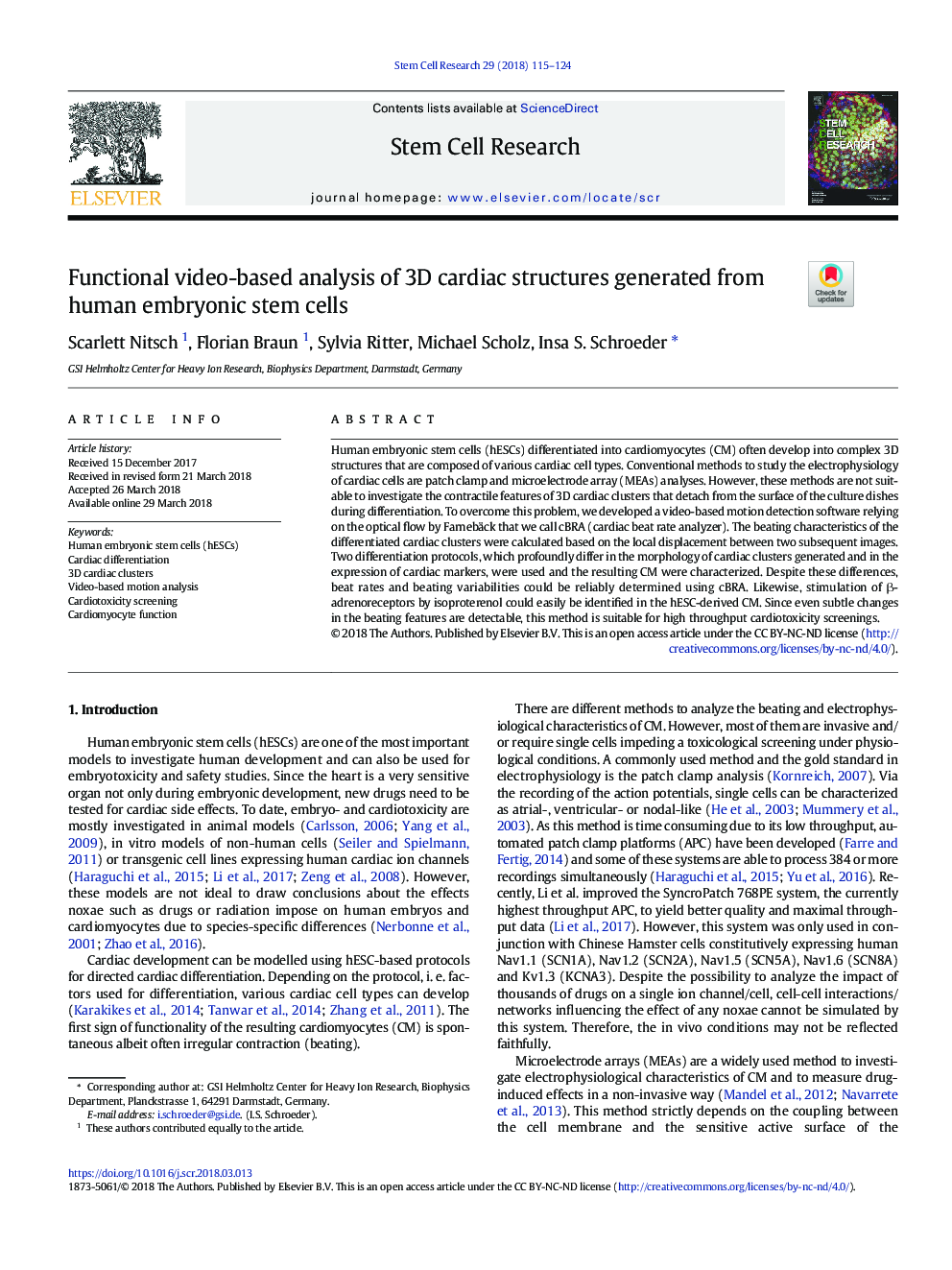| Article ID | Journal | Published Year | Pages | File Type |
|---|---|---|---|---|
| 8425187 | Stem Cell Research | 2018 | 10 Pages |
Abstract
Human embryonic stem cells (hESCs) differentiated into cardiomyocytes (CM) often develop into complex 3D structures that are composed of various cardiac cell types. Conventional methods to study the electrophysiology of cardiac cells are patch clamp and microelectrode array (MEAs) analyses. However, these methods are not suitable to investigate the contractile features of 3D cardiac clusters that detach from the surface of the culture dishes during differentiation. To overcome this problem, we developed a video-based motion detection software relying on the optical flow by Farnebäck that we call cBRA (cardiac beat rate analyzer). The beating characteristics of the differentiated cardiac clusters were calculated based on the local displacement between two subsequent images. Two differentiation protocols, which profoundly differ in the morphology of cardiac clusters generated and in the expression of cardiac markers, were used and the resulting CM were characterized. Despite these differences, beat rates and beating variabilities could be reliably determined using cBRA. Likewise, stimulation of β-adrenoreceptors by isoproterenol could easily be identified in the hESC-derived CM. Since even subtle changes in the beating features are detectable, this method is suitable for high throughput cardiotoxicity screenings.
Related Topics
Life Sciences
Biochemistry, Genetics and Molecular Biology
Biotechnology
Authors
Scarlett Nitsch, Florian Braun, Sylvia Ritter, Michael Scholz, Insa S. Schroeder,
